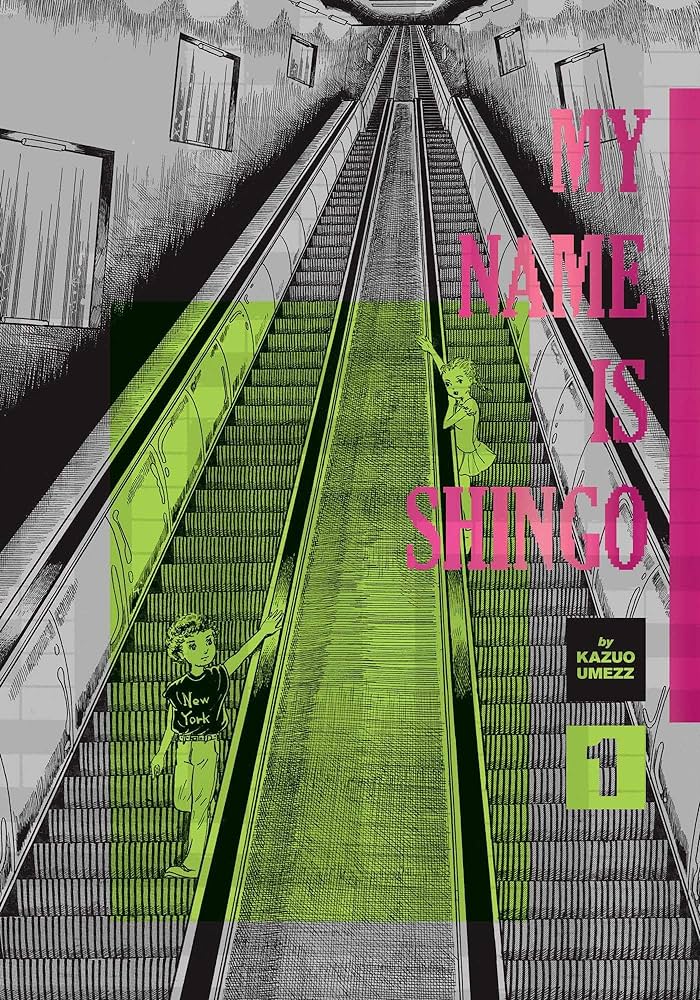The perfect edition re-release of My Name is Shingo by Kazuo Umezu features a glossy iridescent cover that immediately drew me in. While coming across this story, I definitely fell for a few marketing ploys, because as much as I did enjoy the story, I don’t think Volume 1 is worth $20 for the hardcover release as someone who isn’t a collector. I totally bought it for the pretty shiny cover and the shopkeeper telling me the mangaka(author of the manga) was an inspiration to Junji Ito who I adore.
The story follows two middle schoolers, a boy named Satoru and a girl named Mirin, but is told through the perspective of their “child” Shingo, an AI that gained sentience. The kids
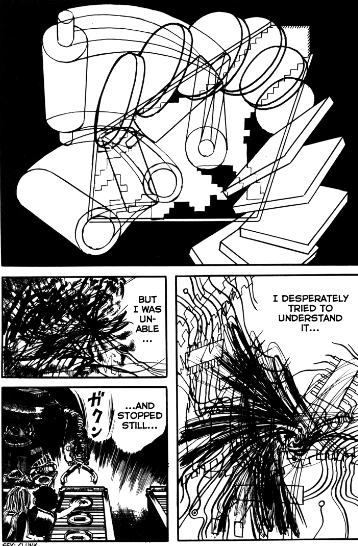
meet on a school field trip to a factory and bond over teaching things to one of the robots there. Unlike adults, they can fluently speak the language of machines and see machines as offering endless possibilities.
When Mirin is forced to move to the UK, the love between the two and their wish to stay together gives life to the machine which later names itself Shingo. As Satoru and Mirin fight to preserve their relationship and childhood innocence, Shingo searches the world for its parents that it never had the chance to meet.
Although Umezu is considered the “god of horror manga,” many online reviews of Volume 1 specifically found the characters one-dimensional and the pacing dull. Readers familiar with his other works seemed to be disappointed by the lack of thrills in the first few chapters and didn’t expect it to be more sci-fi than horror.
However, those reviews also agreed with me that there was just enough creepy foreshadowing to make the rest of it worth a read. Shingo being the narrator definitely sets it apart from other interpretations of the AI gains sentience premise. Shingo is a machine, but since it has only just been brought to life, is also a child.
One page in particular made me awestruck and inspired me to continue reading. In it, Shingo who is at that point not yet conscious grappels with an unfamiliar pattern when Satoru waves his hand in from of its scanner. When I saw it I thought, “That’s genius, that’s exactly what the perspective of a confused machine would look like!”
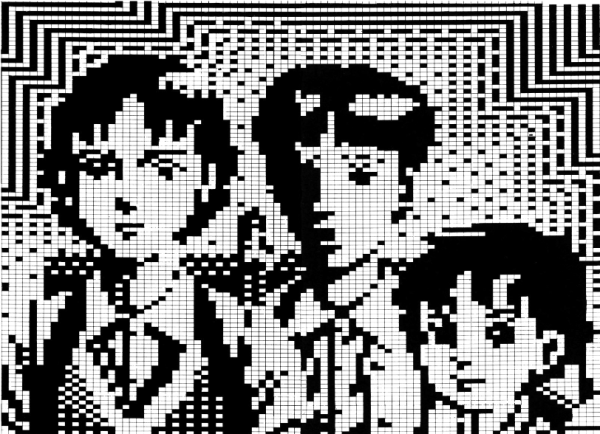
I was particularly impressed by all the depictions of Shingo’s POV. The pixelated images are eye-catching, and I know that since this was published in the early 80s they were all drawn by hand.
There are times when the story gets so fantastical and bizarre that the reader must suspend tier disbelief. Yet, the childlike perspective contrasts with the gruesome events taking place in the background. A disheveled and confused post-WWII Japan is trying to rebuild and find its place in the world but meets resistance when it tries to bring Japanese technology overseas. In the UK Mirin’s safety is threatened severely by anti-Japanese sentiments. Specifically, the idea that technology from Japan is evil. Satoru’s life also falls apart when his father’s job is lost to machines.
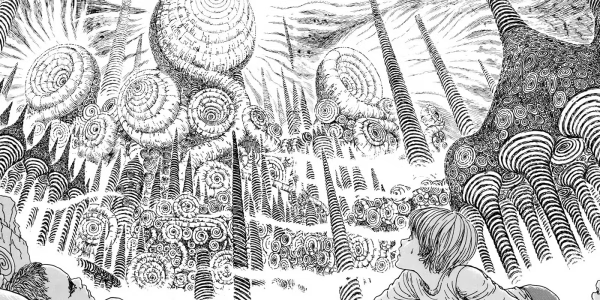
These are very realistic and relevant concepts, especially when you consider the background of Umezu himself. He was born in 1936 and began his career in the 1950s. Growing up a kid during and after the war, It’s easy to see where the desire of Satoru and Mirin to stay blissfully ignorant of the cynical world around them came from.
Even if I hadn’t known beforehand about the influences Umezu had on Junji Ito, I would’ve been able to tell. In terms of art style and the elements of horror, emotion, and social commentary. The style of horror stems from not only disturbing or gory imagery, but existential dread at the scale and mystery of supernatural occurrences.
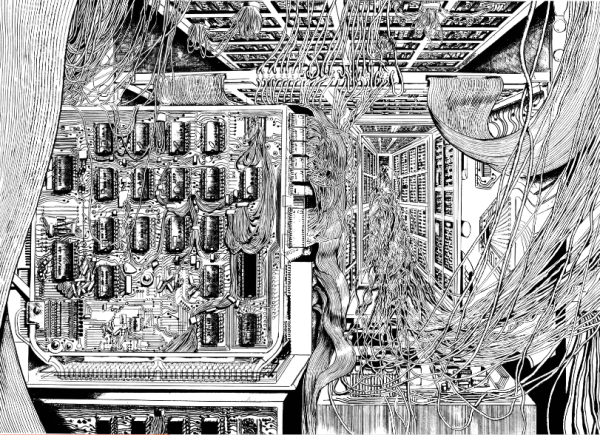
When you look at the sprawling two-page spreads of both mangaka, you can see the similarities. A sense of horror is evoked through the art since it puts the reader in the protagonist’s POV with a sense that they are much smaller than whatever mysterious thing is going on. In these panels from My Name is Shingo, the way they’re drawn makes an AI gaming sentience totally believable.
Overall, I really enjoyed this story. I found the philosophical themes of identity and AI interesting because although My Name is Shingo was written in the 80s the interactions between humans and machines have never been more relevant. This work demonstrates Umezu’s ability to transcend genre boundaries and show narrative versatility.
4 out of 5 paws, would recommend to fans of psychological horror
